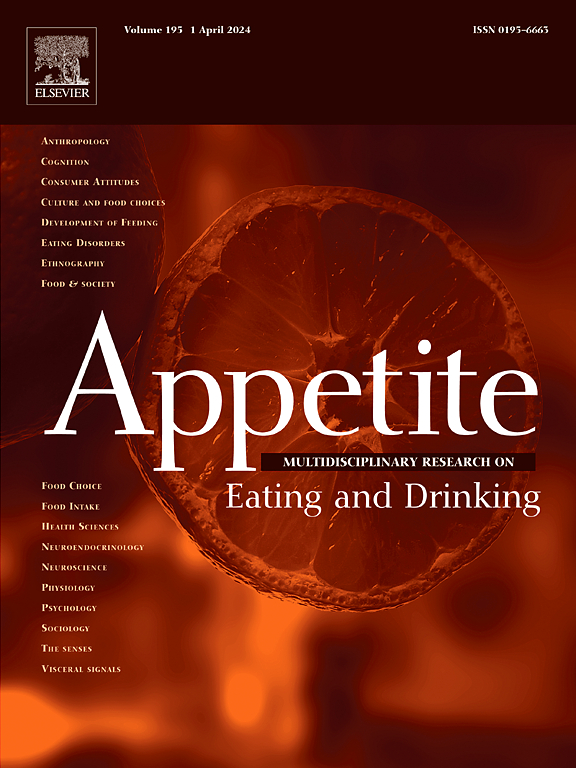Cognitive processing and intuitive characteristics of health intertemporal decision-making: Evidence from behavioral and ERP studies
IF 3.8
2区 医学
Q1 BEHAVIORAL SCIENCES
引用次数: 0
Abstract
Background
Health intertemporal decision-making is related to the health and well-being of individuals and the nation. However, its cognitive processing remains poorly understood. From a healthcare perspective, the current study adopts a dual-processing theory framework and employs the food time discount rate as a measurement paradigm to systematically examine the relationship between health behaviors and health intertemporal decision-making, as well as their underlying cognitive processing.
Methods
The current study consists of three interconnected sub-studies. Study 1 recruited 397 participants from northwestern and southwestern China, who were asked to rate 21 health behaviors across three dimensions: required effort, duration, and health impact. Cluster analysis was then used to test whether health behaviors could serve as proxy indicators of health intertemporal decision-making. Study 2 recruited 156 participants from northwestern China and explored whether health intertemporal decision-making simultaneously relies on heuristic and analytical processing by manipulating emotional tasks (heuristic processing) and working memory tasks (analytical processing). Study 3 recruited 30 participants from northwestern China and employed event-related potential (ERP) technology to compare intuitive preferences in health intertemporal decision-making under manipulations of time intervals.
Results
The results of Study 1 indicate that, compared to short-term-effortless health behaviors, long-term-effortful health behaviors scored significantly higher on effort investment (t = 22.902∗∗∗) and duration (t = 16.607∗∗∗), but significantly lower on health impact (t = −18.779∗∗∗), suggesting that health behaviors can be categorized into two types: long-term-effortful health behaviors corresponding to delayed large benefits and short-term-effortless health behaviors corresponding to immediate small benefits. This provides a feasible method for indirectly measuring health intertemporal decision-making through health behaviors. The results of Study 2 showed a significant interaction between heuristic and analytical processing in health intertemporal decision-making (F(1, 147) = 4.934, p = 0.028, ηp2 = 0.032). Moreover, individuals exhibited higher discount rates and a stronger preference for immediate gratification in unhealthy food contexts (F(1, 147) = 16.886, p < 0.001, ηp2 = 0.103), suggesting that health intertemporal decision-making conforms to a dual-process model. The results of Study 3 showed that when presented with unhealthy foods, individuals exhibited a stronger preference for immediate rewards (F(1, 24) = 0.391, p = 0.538, ηp2 = 0.016) and relied more on heuristic processing (N1: F(1, 24) = 1.258, p = 0.273, ηp2 = 0.050; P2: F(1, 24) = 0.259, p = 0.615, ηp2 = 0.011).
Discussion
Current research indicates that healthy behaviors can serve as indirect measures of health intertemporal decision-making, which follows the dual-process theory, and that unhealthy foods are more susceptible to reliance on heuristic processing. This not only expands the applicability of dual-process theory in health intertemporal decision-making but also provides theoretical support for intervention strategies based on delayed gratification and inhibitory control, thereby offering new insights into promoting individual health outcomes.
健康跨期决策的认知加工和直觉特征:来自行为和ERP研究的证据。
背景:健康跨期决策关系到个人和国家的健康和福祉。然而,它的认知过程仍然知之甚少。本研究从健康视角出发,采用双加工理论框架,以食物时间折现率为测量范式,系统考察健康行为与健康跨期决策的关系及其背后的认知加工过程。方法:本研究由三个相互关联的子研究组成。研究1招募了来自中国西北和西南地区的397名参与者,他们被要求从三个方面对21种健康行为进行评分:所需的努力、持续时间和健康影响。然后采用聚类分析来检验健康行为是否可以作为健康跨期决策的代理指标。研究2在西北地区招募了156名被试,通过操纵情绪任务(启发式加工)和工作记忆任务(分析加工),探讨健康跨期决策是否同时依赖于启发式加工和分析性加工。研究3在西北地区招募30名被试,采用事件相关电位(event- correlation potential, ERP)技术比较时间间隔操纵下健康跨期决策的直觉偏好。结果:研究1的结果表明,与短期不费力的健康行为相比,长期不费力的健康行为在努力投入(t = 22.902***)和持续时间(t = 16.607***)上得分显著高于短期不费力的健康行为,而在健康影响(t = -18.779***)上得分显著低于短期不费力的健康行为,表明健康行为可分为两类:长期努力的健康行为对应于延迟的大收益,短期不努力的健康行为对应于即时的小收益。这为通过健康行为间接测量健康跨期决策提供了一种可行的方法。研究2的结果显示,启发式加工与分析性加工在健康跨期决策中的交互作用显著(F(1,147) = 4.934, p = 0.028, ηp2 = 0.032)。此外,个体在不健康食品情境下表现出更高的折现率和更强的即时满足偏好(F(1,147) = 16.886, p < 0.001, ηp2 = 0.103),表明健康跨期决策符合双过程模型。研究3的结果表明,当不健康食品出现时,个体表现出更强的即时奖励偏好(F(1,24) = 0.391, p = 0.538, ηp2 = 0.016),更依赖于启发式加工(N1: F(1,24) = 1.258, p = 0.273, ηp2 = 0.050;P2: F(1,24) = 0.259, p = 0.615, ηp2 = 0.011)。讨论:目前的研究表明,健康行为可以作为健康跨期决策的间接衡量标准,这遵循双过程理论,而不健康食品更容易依赖启发式加工。这不仅扩展了双过程理论在健康跨期决策中的适用性,也为基于延迟满足和抑制控制的干预策略提供了理论支持,从而为促进个体健康结果提供了新的见解。
本文章由计算机程序翻译,如有差异,请以英文原文为准。
求助全文
约1分钟内获得全文
求助全文
来源期刊

Appetite
医学-行为科学
CiteScore
9.10
自引率
11.10%
发文量
566
审稿时长
13.4 weeks
期刊介绍:
Appetite is an international research journal specializing in cultural, social, psychological, sensory and physiological influences on the selection and intake of foods and drinks. It covers normal and disordered eating and drinking and welcomes studies of both human and non-human animal behaviour toward food. Appetite publishes research reports, reviews and commentaries. Thematic special issues appear regularly. From time to time the journal carries abstracts from professional meetings. Submissions to Appetite are expected to be based primarily on observations directly related to the selection and intake of foods and drinks; papers that are primarily focused on topics such as nutrition or obesity will not be considered unless they specifically make a novel scientific contribution to the understanding of appetite in line with the journal's aims and scope.
 求助内容:
求助内容: 应助结果提醒方式:
应助结果提醒方式:


